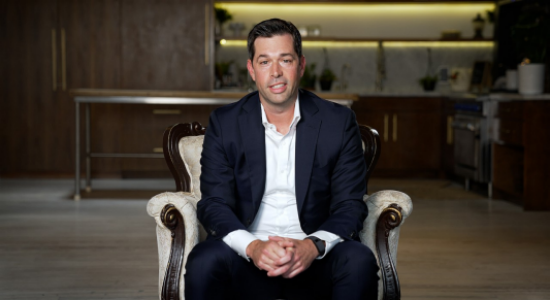 Placing bets on the future starts with a healthy and profitable core. Without that, margins compress, valuations drop, and investment opportunities face further scrutinyManoj Bhojwani, Partner
Placing bets on the future starts with a healthy and profitable core. Without that, margins compress, valuations drop, and investment opportunities face further scrutinyManoj Bhojwani, Partner
- About this video
- Transcript
Achieving net zero will require businesses to invest in sustainability while addressing access to human capital, supply chain reliability, and new technology.
Oliver Wyman Takes On Series
In this video series, energy and natural resources experts share their take on how businesses can harness risk, turn climate intent into action, and lead in the age of acceleration.
Achieving net zero is a must. That said, like most things in life, it’s a balancing act. Growing profitably while investing in future solutions will be critical to the health of businesses and the investor base behind the energy transition. The question remains, “How do we pull that off?”
My name is Manoj Bhojwani, and I’m an Oliver Wyman partner in the Americas, and I’m currently leading our Waste and Environmental Services team. I haven’t always been based in the Americas. In fact, I was born in Japan and lived in five countries by the time I graduated college. The reason I’m telling you this is because constant change is innate to who I am.
Whether it’s incremental or large-scale transformations, I find it exciting to help my clients embrace change as they balance the need to protect today’s business and invest in an undefined future. More recently, I’ve been helping my clients navigate through the energy transition. Specifically, in squeezing more margin out of their core business through digitization and next-gen data and analytics, while also reducing the carbon footprint of asset-intensive businesses and enabling the organization’s ability to deliver. This sets up the opportunity to place some bets on future investments.
We know there will be north of a $100 trillion invested, and there are no shortage of ideas to experiment, and our investor base will only be so patient. As a result, innovating and delivering change profitably will be critical. A successful transition requires the co-existence of sustainability investments for tomorrow and profitability today. Success will be the result of a series of profitable moves by individual companies and partnerships with local, national, and global governments and leaders that compound to result in meaningful progress to decarbonize.
Over the last decade, the energy — and more broadly industrials — sector has had it fairly good. The core of the business is fundamentally difficult to execute, but the players in the space have largely nailed it. More recently, it’s started to feel like the “good times” are coming to an end. Beyond net-zero goals, there are meaningful challenges: access to human capital, supply chain reliability, and ongoing disruptions from technology. This is a problem.
Placing bets on the future starts with a healthy and profitable core. Without that, margins compress, valuations drop, and investment opportunities face further scrutiny. Let me use a rowing analogy. One oar is margin and one oar represents investments in new growth – when executed simultaneously, the boat propels forward and in the right direction. Conversely, rowing out of sync, the boat veers off course.
Let’s use the waste industry as an example – a sector that is often taken for granted – and whose major players comprise roughly $170 billion of market cap. Their pricing programs continue to protect the top line, while digitization of the collection and disposal operations helps drive a more efficient operating model. This has afforded those leading players the ability to make bold bets. When executed correctly, they’re further optimizing for scarce and expensive resources and accelerating their asset portfolio to contribute to net-zero goals.
For example, recycling facilities are adopting AI to improve the quality and quantity of re-use. Investments in renewable gas facilities allow those companies to fuel their own fleets or connect back into the local electric grid. New loops are leveraging municipal solid waste for feedstock to produce renewable fuels, such as sustainable aviation fuel.
The balancing act between investing in your core – also known as the “old” – and investing in the “new” is critical to success. When done right, the market rewards it. I am excited about the future and fortunate to be in the boat with my clients, rowing alongside them and doing the hard work necessary. While none of us know what is next, I know I will be excited to look back at the progress with my clients and my team, feeling proud of the transformations we’ve accomplished.
I’m Manoj Bhojwani, and this is my take on balancing profitability and growth for the energy transition.
This transcript has been edited for clarity.
- About this video
- Transcript
Achieving net zero will require businesses to invest in sustainability while addressing access to human capital, supply chain reliability, and new technology.
Oliver Wyman Takes On Series
In this video series, energy and natural resources experts share their take on how businesses can harness risk, turn climate intent into action, and lead in the age of acceleration.
Achieving net zero is a must. That said, like most things in life, it’s a balancing act. Growing profitably while investing in future solutions will be critical to the health of businesses and the investor base behind the energy transition. The question remains, “How do we pull that off?”
My name is Manoj Bhojwani, and I’m an Oliver Wyman partner in the Americas, and I’m currently leading our Waste and Environmental Services team. I haven’t always been based in the Americas. In fact, I was born in Japan and lived in five countries by the time I graduated college. The reason I’m telling you this is because constant change is innate to who I am.
Whether it’s incremental or large-scale transformations, I find it exciting to help my clients embrace change as they balance the need to protect today’s business and invest in an undefined future. More recently, I’ve been helping my clients navigate through the energy transition. Specifically, in squeezing more margin out of their core business through digitization and next-gen data and analytics, while also reducing the carbon footprint of asset-intensive businesses and enabling the organization’s ability to deliver. This sets up the opportunity to place some bets on future investments.
We know there will be north of a $100 trillion invested, and there are no shortage of ideas to experiment, and our investor base will only be so patient. As a result, innovating and delivering change profitably will be critical. A successful transition requires the co-existence of sustainability investments for tomorrow and profitability today. Success will be the result of a series of profitable moves by individual companies and partnerships with local, national, and global governments and leaders that compound to result in meaningful progress to decarbonize.
Over the last decade, the energy — and more broadly industrials — sector has had it fairly good. The core of the business is fundamentally difficult to execute, but the players in the space have largely nailed it. More recently, it’s started to feel like the “good times” are coming to an end. Beyond net-zero goals, there are meaningful challenges: access to human capital, supply chain reliability, and ongoing disruptions from technology. This is a problem.
Placing bets on the future starts with a healthy and profitable core. Without that, margins compress, valuations drop, and investment opportunities face further scrutiny. Let me use a rowing analogy. One oar is margin and one oar represents investments in new growth – when executed simultaneously, the boat propels forward and in the right direction. Conversely, rowing out of sync, the boat veers off course.
Let’s use the waste industry as an example – a sector that is often taken for granted – and whose major players comprise roughly $170 billion of market cap. Their pricing programs continue to protect the top line, while digitization of the collection and disposal operations helps drive a more efficient operating model. This has afforded those leading players the ability to make bold bets. When executed correctly, they’re further optimizing for scarce and expensive resources and accelerating their asset portfolio to contribute to net-zero goals.
For example, recycling facilities are adopting AI to improve the quality and quantity of re-use. Investments in renewable gas facilities allow those companies to fuel their own fleets or connect back into the local electric grid. New loops are leveraging municipal solid waste for feedstock to produce renewable fuels, such as sustainable aviation fuel.
The balancing act between investing in your core – also known as the “old” – and investing in the “new” is critical to success. When done right, the market rewards it. I am excited about the future and fortunate to be in the boat with my clients, rowing alongside them and doing the hard work necessary. While none of us know what is next, I know I will be excited to look back at the progress with my clients and my team, feeling proud of the transformations we’ve accomplished.
I’m Manoj Bhojwani, and this is my take on balancing profitability and growth for the energy transition.
This transcript has been edited for clarity.
Achieving net zero will require businesses to invest in sustainability while addressing access to human capital, supply chain reliability, and new technology.
Oliver Wyman Takes On Series
In this video series, energy and natural resources experts share their take on how businesses can harness risk, turn climate intent into action, and lead in the age of acceleration.
Achieving net zero is a must. That said, like most things in life, it’s a balancing act. Growing profitably while investing in future solutions will be critical to the health of businesses and the investor base behind the energy transition. The question remains, “How do we pull that off?”
My name is Manoj Bhojwani, and I’m an Oliver Wyman partner in the Americas, and I’m currently leading our Waste and Environmental Services team. I haven’t always been based in the Americas. In fact, I was born in Japan and lived in five countries by the time I graduated college. The reason I’m telling you this is because constant change is innate to who I am.
Whether it’s incremental or large-scale transformations, I find it exciting to help my clients embrace change as they balance the need to protect today’s business and invest in an undefined future. More recently, I’ve been helping my clients navigate through the energy transition. Specifically, in squeezing more margin out of their core business through digitization and next-gen data and analytics, while also reducing the carbon footprint of asset-intensive businesses and enabling the organization’s ability to deliver. This sets up the opportunity to place some bets on future investments.
We know there will be north of a $100 trillion invested, and there are no shortage of ideas to experiment, and our investor base will only be so patient. As a result, innovating and delivering change profitably will be critical. A successful transition requires the co-existence of sustainability investments for tomorrow and profitability today. Success will be the result of a series of profitable moves by individual companies and partnerships with local, national, and global governments and leaders that compound to result in meaningful progress to decarbonize.
Over the last decade, the energy — and more broadly industrials — sector has had it fairly good. The core of the business is fundamentally difficult to execute, but the players in the space have largely nailed it. More recently, it’s started to feel like the “good times” are coming to an end. Beyond net-zero goals, there are meaningful challenges: access to human capital, supply chain reliability, and ongoing disruptions from technology. This is a problem.
Placing bets on the future starts with a healthy and profitable core. Without that, margins compress, valuations drop, and investment opportunities face further scrutiny. Let me use a rowing analogy. One oar is margin and one oar represents investments in new growth – when executed simultaneously, the boat propels forward and in the right direction. Conversely, rowing out of sync, the boat veers off course.
Let’s use the waste industry as an example – a sector that is often taken for granted – and whose major players comprise roughly $170 billion of market cap. Their pricing programs continue to protect the top line, while digitization of the collection and disposal operations helps drive a more efficient operating model. This has afforded those leading players the ability to make bold bets. When executed correctly, they’re further optimizing for scarce and expensive resources and accelerating their asset portfolio to contribute to net-zero goals.
For example, recycling facilities are adopting AI to improve the quality and quantity of re-use. Investments in renewable gas facilities allow those companies to fuel their own fleets or connect back into the local electric grid. New loops are leveraging municipal solid waste for feedstock to produce renewable fuels, such as sustainable aviation fuel.
The balancing act between investing in your core – also known as the “old” – and investing in the “new” is critical to success. When done right, the market rewards it. I am excited about the future and fortunate to be in the boat with my clients, rowing alongside them and doing the hard work necessary. While none of us know what is next, I know I will be excited to look back at the progress with my clients and my team, feeling proud of the transformations we’ve accomplished.
I’m Manoj Bhojwani, and this is my take on balancing profitability and growth for the energy transition.
This transcript has been edited for clarity.


